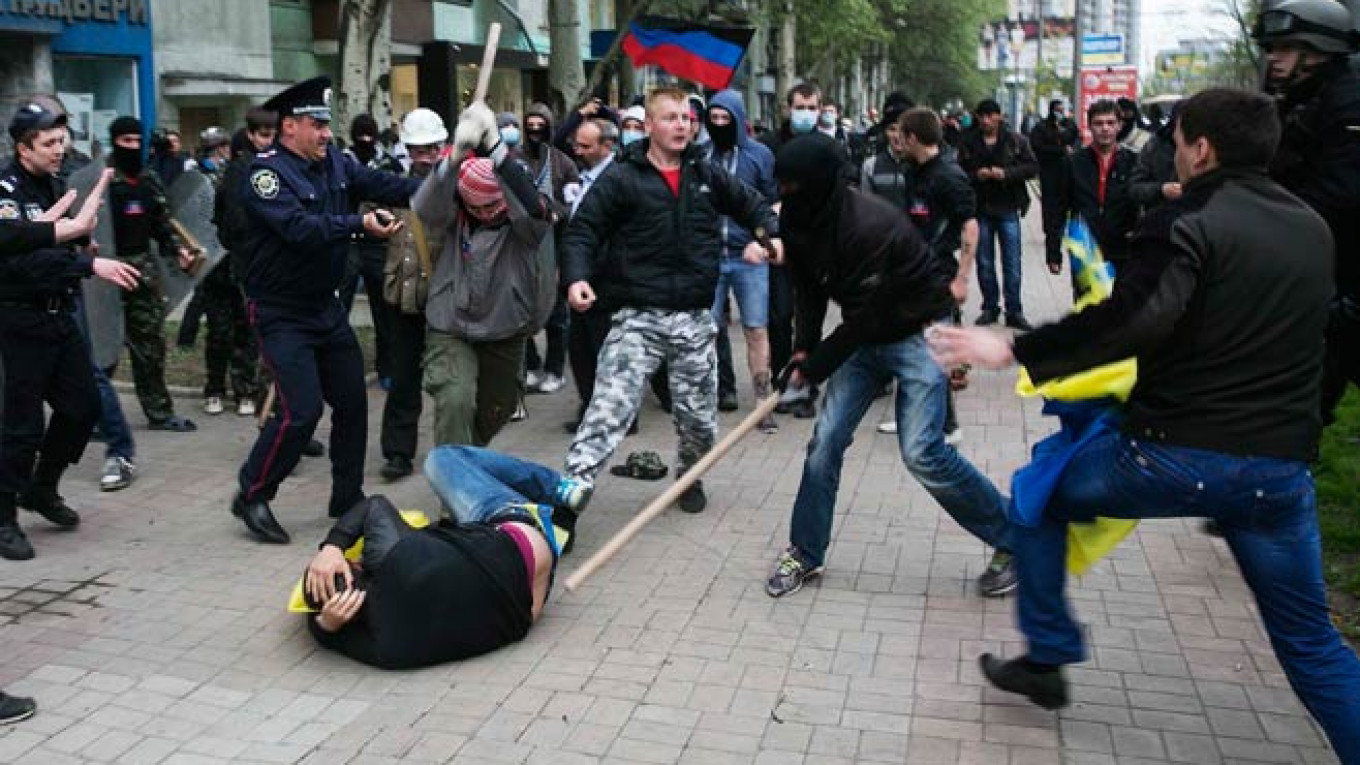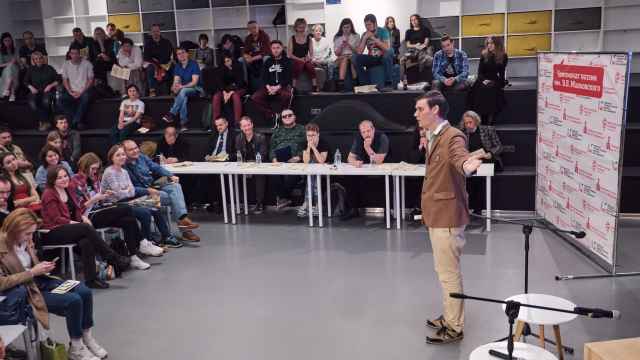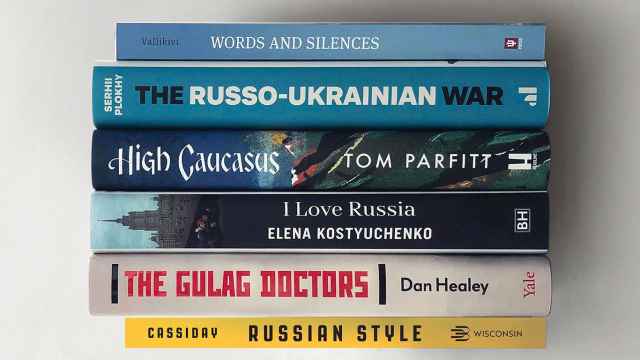From mid-October, larger and larger crowds convened in Kiev. Worried about their size and their calls for change, the authorities declared martial law and had dozens arrested. These actions only saw the protestors grow in numbers. Some vandalized buildings while others threw rocks at armed guards. The majority of protestors, as journalists reported, were united in their shared disgust with the political order and desire to create a better, more democratic society.
While the above scene may sound familiar, it occurred in October 1905, not 2013, and is one of many events Faith Hillis examines in her important new book, "Children of Rus': Right-Bank Ukraine and the Invention of a Russian Nation." Hillis traces the rise of a nationalist movement that started in the 1830s in the Russian Empire's southwest borderlands. A disparate group of intellectuals, artists, and local notables began to reimagine imperial history as an ethnic, nationalist story.
This project envisioned the residents of this multiethnic region as "children of Rus'," with Orthodox Slavs serving as the inheritors of traditions that stretched back centuries. Hillis explores how the group fashioned a "Little Russian" sense of nationhood, one that initially saw all Eastern Orthodox Slavs living in the Dnepr region as brothers. The proponents of this Little Russian idea attempted to spread their narrative, encouraging the imperial government to "protect" them from the hostile groups — mostly Poles and Jews, but eventually Ukrainian nationalists — who threatened them.
"Children of Rus'" concludes with the start of World War I and the disintegration of the Little Russian idealists by that time. Hillis tells a complex, nuanced history well and makes use of archives in Ukraine, Russia, and the U.S. No short review can relate the fascinating episodes and important insights she relates. The development of nationalist ideas in the southwest borderland, Hillis proves, was a dynamic, complex process, but one that proved to be significant and lasting. Hillis reveals how the initial activism of Little Russian idealists evolved over the course of the century, eventually creating growing into a mass political movement by the early twentieth century. By that time, however, the "Little Russian Idea" had broken into competing groups.
When the first organized societies appeared in the 1830s to study the history of the region and to "prove" that the Dnieper region had always been the home to a battling eastern Slavic civilization, they counted the poet Taras Shevchenko among their number — the secretive Cyril and Methodius Brotherhood, as Hillis demonstrates, developed out of the early stages. Eventually, as the activists spread and created newspapers and voluntary associations, several camps emerged — some began to view the story of eastern Slavic culture as a "Ukrainian" one, while others began to defend it as a "Russian" one.
As Hillis shows, the evolving battles over the "children of Rus'" idea also involved Shevchenko's legacy: he came to be seen by some as a Ukrainian patriot while others saw him as a dangerous revolutionary. It is in this context, Hillis writes, that many Little Russian activists, including Mikhail Katkov, began to argue that Ukrainians were not a separate people at all. Instead, as one of the activists would claim by 1864, "our region is Russian, Russian, Russian."
Although the right bank activists debated the nature of their project and the nature of Russian nationalism, they increasingly grew more influential. Hillis ties a number of civic projects in late 19th-century Kiev to the "children of Rus'" proponents, and details the rise of a new, mass political movement in the city. As Kiev grew into a bustling commercial center with a multinational flavor, Little Russian activists managed to depict this diversity as the source of the people's suffering and called on the imperial government to "liberate" the Russians who "suffered" at the hands of Jewish and Polish merchants.
By 1905, Kiev had developed mass political movements, but the proponents of the "Little Russian Idea" called for illiberal means to rid the city and the region of "alien" elements. A pamphlet published by the Pechersk Monastery in August 1905 warned "true, Orthodox Russians" against the "clever and cunning" Jews who "have made a lot of noise in our cities." Kiev's Jewish population, the pamphlet warned, were dangerous because "Holy Russia is not the native motherland for them." Increasingly, the "Little Russian idea" had turned into a "true Russian" one.
This sort of mix, which Hillis carefully traces from the 1830s debates, explains the 1905 protests referenced above. Because of the atmosphere in the city at the time and the increasing spread of "true Russian" ideas, as Hillis writes, the protests turned violent and ugly against Kiev's Jewish population. This toxicity spilled over into the creation of political parties in the region after Tsar Nicholas II announced his October Manifesto.
While the region witnessed the rise of Ukrainian parties led by the historian M.S. Hrushevs'kyi, the "true Russian" parties enjoyed more support and eventually triumphed in the Duma elections. In telling this story, Hillis also reinterprets the infamous Beilis Affair of 1911 and 1912, when true Russian nationalists launched a campaign that tried to tie the murder of a young boy to alleged Jewish ritual murder. By that time, Hillis shows, the true Russian movement posed threats to the stability not only of the region, but the empire itself.
The nationalist ideas, competing claims to the region's history, illiberal mass political movements, and violent methods the Little Russian activists spawned outlived them and the empire they sought to transform. By 1914, with war underway, the Russian nationalists that had emerged out of the decades-long fights to define the region's history no longer had a viable movement, but, as Hillis concludes, their legacies would continue. Hillis's detailed, nuanced, and important history contains an epilogue that covers the evolution of the ideas into the mid-20th century, concluding that the movement itself "proved remarkably adaptable to the violent new world that took shape in the 20th century." Sadly, as recent events have shown, some of these echoes of the past continue to reverberate in the region.
Faith Hillis, "Children of Rus': Right-Bank Ukraine and the Invention of a Russian Nation." Ithaca, NY: Cornell University Press, 2013.
Stephen M. Norris is professor of history and assistant director of the Havighurst Center for Russian and Post-Soviet Studies, Miami University (OH). Contact him at artsreporter@imedia.ru






